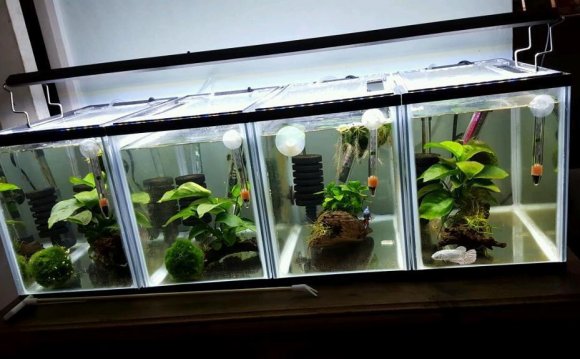
Using aquarium salt should be considered if you like to keep your betta healthy. I realize this can still be considered controversial, however through research and practical application the positives far outweigh the negatives if used properly. It is an inexpensive preventative that does not harm the beneficial bacteria in your tank or plants when used at the recommended dose. Aquarium salt does not contain iodine like table salt or trace mineral like sea salt. Most tap water has an extremely low level of salinity. The rivers in Thailand do not flow with North American tap water and once chlorine is gone via dechlorinator—it’s a party for bacteria in tap water. By adding aquarium salt we are actually recreating the betta’s natural habitat conditions. The natural Thailand environment of betta has a wide range of salinity, from very low to brackish depending on location or proximity to the Gulf of Thailand which is a salt water environment with fresh water flow. Thus betta have a high tolerance to salinity variance developed over millions of years. Most bad bacteria have little or no ability to adapt to changes in salinity and will literally burst cells causing death.
Aquarium Salt can:
Aid in the control of many parasitic and pathogen populations including Ich and velvet.
Enhance the fish ability to produce a good protective slime coat. Very helpful if the fish is recovering from a bacterial infection, injury, torn or bitten fins and often fin rot.
Prevent intake of lethal nitrates during nitrogen cycling of a new tank.
Prevent intake of stressful high nitrates in existing cycled aquariums.
Lessen the fish stress levels by aiding the gill function.
Fish kidneys are designed to excrete water absorbed through the skin and gills. This is a major and important job. By adding aquarium salt the fish kidneys do less work because the amount of water absorbed into the blood via the gills is reduced.
Adds needed electrolytes to the water.
Osmoregulation is basically the maintaining of a proper fluid-electrolyte balance in the body fluids of fish. Osmosis is the tendency of water to travel through a semi-permeable membrane from an area of high electrolyte concentration. Why is this important to the fish? First of all, blood and body fluids contain several electrolytes. For ease in discussion, we will say salts. The concentration of salts in the body fluid of freshwater fish is much higher than their surrounding water. A fishes’ gills are a perfect example of semi-permeable membrane. Water from the outside wants to go through the gills- to inside- and does, in large quantities. If this went on unchecked, the internal body fluids of the fish would become severely diluted and suffer an intolerable electrolyte loss through elimination. Freshwater fish deal with this problem in several ways. When there is plenty of oxygen in the water, they cut down on respiration and cut water influx through the gills. (This is one area where low dissolved oxygen can cause a fish a lot of problems). The other way fish deal with this problem is through cells clustered around the base of their gill filaments. These are called chloride cells. These cells require energy from the fish to work. They can transport sodium and chloride ions (against the flow, so to speak) from the water outside, to the blood inside. This replaces electrolytes lost by the production of the large amount of urine excreted. If there is too little sodium and too few chloride ions in the water, the chloride cells must work too hard to do their job, which causes more stress on the fish.
Source: www.ibcbettas.org










